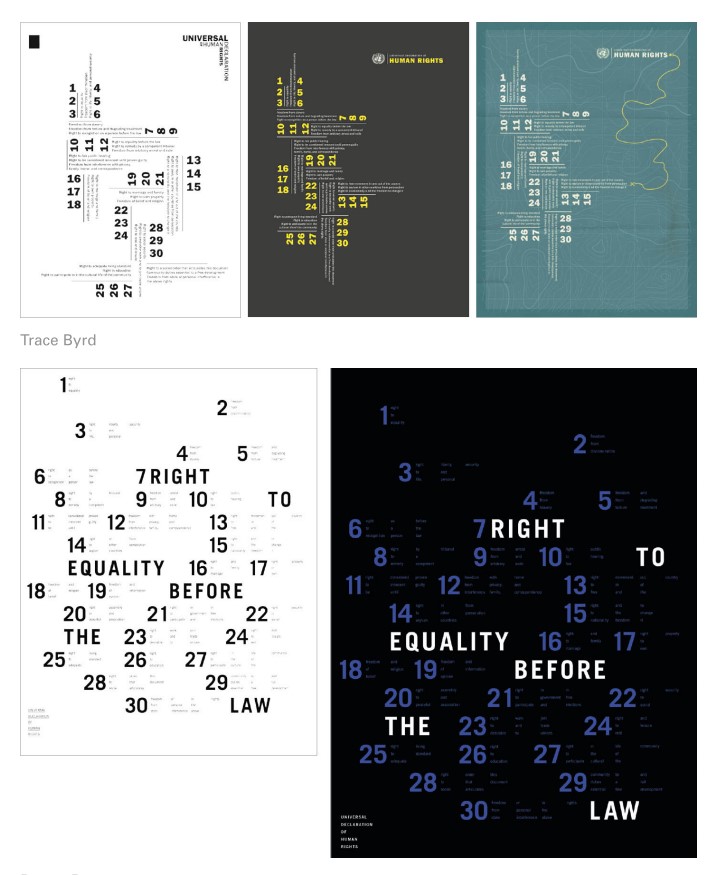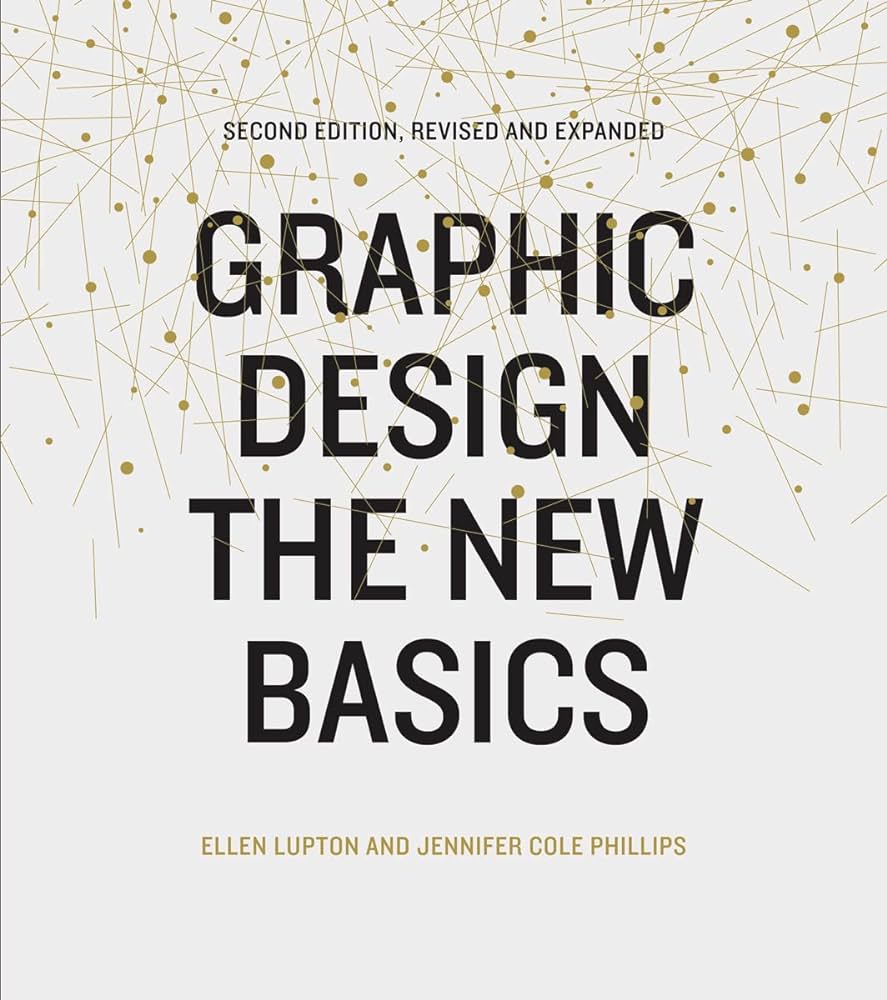
Graphic Design the New Basics
Graphic Design the New Basics
Essay on the book: Graphic Design the New Basics
Essay on the book: Graphic Design the New Basics.
- Graphic design is a fundamental and constantly evolving discipline that has played a significant role in culture and society throughout history, and its importance continues to grow in the digital age. Furthermore, design is a powerful tool for communicating ideas and solving problems, with basic elements such as point, line and plane, as well as other aspects such as color and perception, allowing designers to create effective visual compositions.
Introduction
This book presents a guide to understanding the basic elements of graphic design. It explores fundamental concepts such as the point, the line and the plane, which are the basis on which designers build images, icons and typographic systems. It also addresses key principles such as rhythm, scale, texture and color, explaining in detail how they relate and how they can be manipulated to communicate effectively. The book complements these theoretical definitions with numerous practical examples carried out by students and professionals, showing diverse approaches to working with these elements. In this way, the reader will be able to acquire a solid understanding of the visual grammar on which the design is based.
Design is the art of giving shape to ideas. Since human beings began to use their hands to mold clay or engrave on stone, they have expressed thoughts in tangible form. Over the centuries, this craft became stronger until it became a key discipline for culture. However, it was not until the beginning of the 20th century when design emerged with its own entity as a profession aimed at improving the world around us.
It was then that visionary minds understood that harmoniously organizing form and function would be key to raising the quality of life. Pioneering schools such as the Bauhaus embraced a multidisciplinary approach that integrated applied arts, with the firm conviction that designing is providing solutions to human problems. Little by little, design made its way as an engine of social and economic progress.
Today it is impossible to conceive society without design. From the objects that populate our daily lives to the most sophisticated interfaces that shape our digital age, everything is woven with threads of this chameleon-like discipline. However, the importance of design goes beyond the material: it is a thinking model based on empathy, innovation and the constant search for elegant solutions to human needs.
This book aims to bring the reader closer to the essence and scope of this exciting profession. Throughout its pages you will discover the keys that made it an irreplaceable pillar of contemporary culture. We will also explore their current role in a volatile world where constant changes prevail. For only by understanding the past can we glimpse the power of design to forge a better future.
The basic elements
The basic elements of graphic design allow us to build a powerful visual language. Well, in its simplicity lies a great expressive richness that has fascinated designers throughout history. The point, the line and the plane constitute indivisible pieces of the composition that, when united, generate complex spatial relationships.
The point is the fundamental unit as it represents a position in space determined by coordinates. However, when translated as a mark on a surface, it acquires connotations that go beyond its mathematical definition. A point can be delicate or forceful, subtle or ostentatious depending on its formal treatment. When grouped they form lines that describe trajectories in the two-dimensional plane or volume in three-dimensional space.
The line is dynamic by nature, since its essence lies in the movement of a point through space. It can have various thicknesses and textures that give personality to the brand. When drawn manually with materials such as a pencil or brush, it acquires warmth, while the digital line will appear colder and more controlled, although no less expressive. In graphic design the line is built, elongated, twisted, cut, organized and gives life to shapes.
The plane has width and depth, since it is the two-dimensional surface on which elements are displayed. But by multiplying it in layers, backgrounds and foregrounds the designer explores the richness of three-dimensional space. A plane can be empty or populated with vectors, pixels or paint sticks that give it texture, color and physical qualities. Human skin, a wall, paper, a computer or tablet screen are planes that support the design.
The scale is a dynamic relationship between elements, since changes in the proportions of one element in relation to the others allow us to focus attention or dilute its presence. The sense of depth and perspective, crucial to graphic design, is built gradually as objects appear to move away from or toward us. The figure emerges clearly from the background in a mutable relationship that the designer must understand as part of his visual language.
In summary, the basic elements of the design make up a flexible system suitable for the creation of complex shapes. Although each quality has a specific definition, when they interact with each other they generate inexhaustible expressive possibilities that favor the ability to synthesize ideas in an economical and visually effective way. Its versatility allows diverse meanings to be conveyed through a wide range of media, from a simple brand to an elaborate digital animation.
Color and perception
Color is an omnipresent element in our world, as it is manifested in the ripe fruits of the earth, the iridescent sky at dusk and the rosy face of a loved one. Beyond being a physical phenomenon, color produces fascinating psychological effects on our species. Thus, it has acquired cultural meaning as a symbol of ideologies, nations and artistic movements throughout history.
Color perception begins with the selective stimulation of our retinal cones by electromagnetic waves. However, its final appreciation depends on contextual factors, since the color of an object will vary appreciably under daylight, artificial light, or different wavelengths. On the other hand, color itself has attributes such as saturation, value and chromatic temperature that alter our emotional response to a stimulus.
Color theory prescribed a conceptual order to its relationships through the color wheel, although different cultures classify colors differently. The analogous tone is obtained by mixing nearby colors on the wheel, preserving harmony; while the complementary one places frontal colors in rich contrast. However, colors interact in surprising ways when combined, as one hue can enhance or obscure another according to its value and context.
CMYK and RGB color systems were designed to recreate the visible spectrum with pigments or light. However, its transcription from one color space to another is never completely faithful due to instrumental factors. This is why a wise designer will calibrate his or her chromatic expectations according to the final medium of presentation, since color never remains untouched by the conditions of its perception.
In conclusion, the conceptual richness of colors is deployed as a dynamic language at the service of every designer. Learning to control its subtleties allows you to communicate ideas in a nuanced way, since a change of just a few saturation points or a different nuance can substantially alter the meaning and temperament of a composition.
creative processes
Creativity is the noble gift that allows our species to connect dream worlds with realities never before conceived. Without it, the arts would never have flourished nor science advanced a step. For designers, it is the master key that deciphers seemingly intricate problems, giving life to new solutions. However, its spark is ignited through a slow process of trial and error that the 21st century tends to disdain for speed.
Creative processes involve fundamental stages to unravel the essentials behind every assignment. The initial research immerses the creative in diverse currents that, like raindrops, irrigate his mind of inspiration. Then, incubation allows ideas to germinate in a mental garden, waiting for one to stand out for its seasoning. This is when experimentation leads the designer down unpredictable paths, since the best solution often appears where it was least expected.
However, today the digital maelstrom favors a much more expeditious approach that rarely leaves room for slow reflection. Many believe that an idea must mature immediately, without understanding that it will emerge more lucid after repeated iterative processes. Therefore, it is essential that future designers internalize the importance of each stage in the genesis of a work, otherwise they run the risk of spoiling their own potential with bland solutions.
Therefore, to prevent mediocrity it is necessary to cultivate the mind daily through various channels, whether manual, literary or experimental. Thanks to this, the muse of creativity will come to our aid even in the moments of greatest distress. Only by practicing patience in the face of tasks can we give fruit to ideas so masterful that they last over time, beyond the present where they were born. Well, at the end of the day, art is immortal when it manages to transcend the ephemeral and connect with the eternal that souls harbor.
The applications
If creativity is the soul of design, applications constitute its body and its extremities: the medium that makes it possible to express ideas with palpable facts. Throughout history, designers have expanded their sphere of influence to new areas as a result of technological revolutions. Thus, from the handwritten text they went to the printing press, from there to the digital era and now they conquer unexpected territories thanks to virtual reality.
Currently, the applications of our concepts seem to have no end, since each advance expands the possibilities almost to infinity. Graphic design breaks into devices, platforms and everyday spaces that once seemed inaccessible. There is no doubt that mobile design constitutes the most immediate present and future, as humans spend hours immersed in the screen as if it were an extension of our mind.
However, major challenges await us as interfaces multiply and tactile aspects gain greater strength. Well, if clarity and simplicity are required of us on screens, when the design expands to mixed reality it will have to reach new sensitive agreements with the user. Perhaps the main challenge lies in how to transmute the digital artifice into three-dimensional contexts that take on a life of their own, as virtual assistants are already beginning to do.
Likewise, design for physical products survives strongly despite the siren songs that predict its decline. Well, although the tangible will find a formidable ally in the digital, it will never be equivalent to the satisfaction of certain human needs. Imperfect beings, we long to feel under our fingers the surfaces that surround us, from clothes to household items, through packaging, furniture and everything that is close to us.
Consequently, design applications seem to tend towards a synthesis of the physical and the virtual that will enhance the power of experience. And here lies one of the greatest challenges ahead: to capture in interfaces the soul that animates every object created by skilled hands, whether real or digital. Well, nothing can move the human heart like the magic that emanates from a design capable of transcending its simple functionality .

Conclusion
Thus we arrive at the end of our journey. Throughout these pages we have tried to unravel the secrets of an exciting profession whose relevance is growing by leaps and bounds. Well, if something characterizes design, it is its ability to adapt to changes, embedding itself in each era with greater edge than the previous one. However, behind new tools and fads lies an immutable spirit embodied in perennial values.
Values such as beauty, functionality, formal rigor or the ability to communicate ideas clearly seem as vital today as before the advent of digital. Perhaps the difference lies in the fact that the current designer has greater resources to express them, as well as an increased responsibility as a result of his greater social projection. Well, if design permeates all areas of human activity, the border between creators and the public, between designers and ordinary citizens, is diluted.
From this it follows that the new millennium requires designers to have more transversal training committed to the great contemporary challenges. It is necessary that they handle their tools with skill but, above all, that they understand the ethical dimension that concerns their work. For design is power that, like any force when neglected or denatured, can be twisted against itself and undermine what it previously exalted.
Thus, we trust that the future reserves for this profession, which has contributed so much to progress, a leading role in the construction of more just, sensitive and sustainable societies. Well, if something characterizes the human being, it is his ability to overcome major challenges by joining forces, and in this endeavor design could constitute a valuable ally. The time has come to close this book with the hope of having offered new keys to understanding and exalting an essential art in times of accelerated change like the current ones .





0 comments